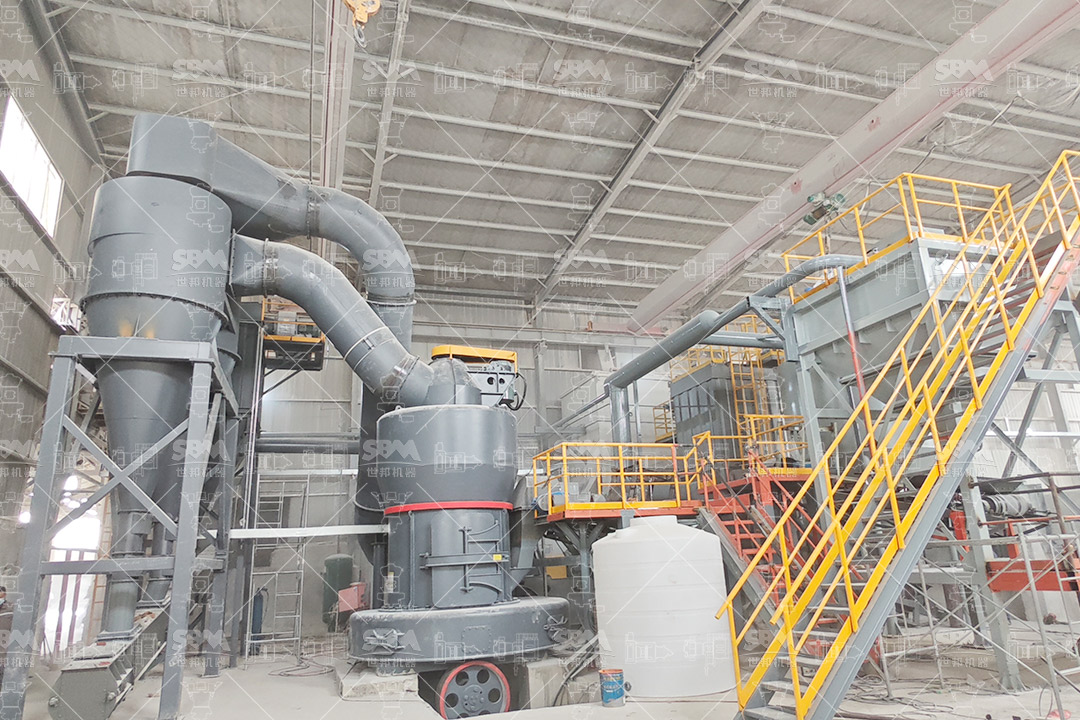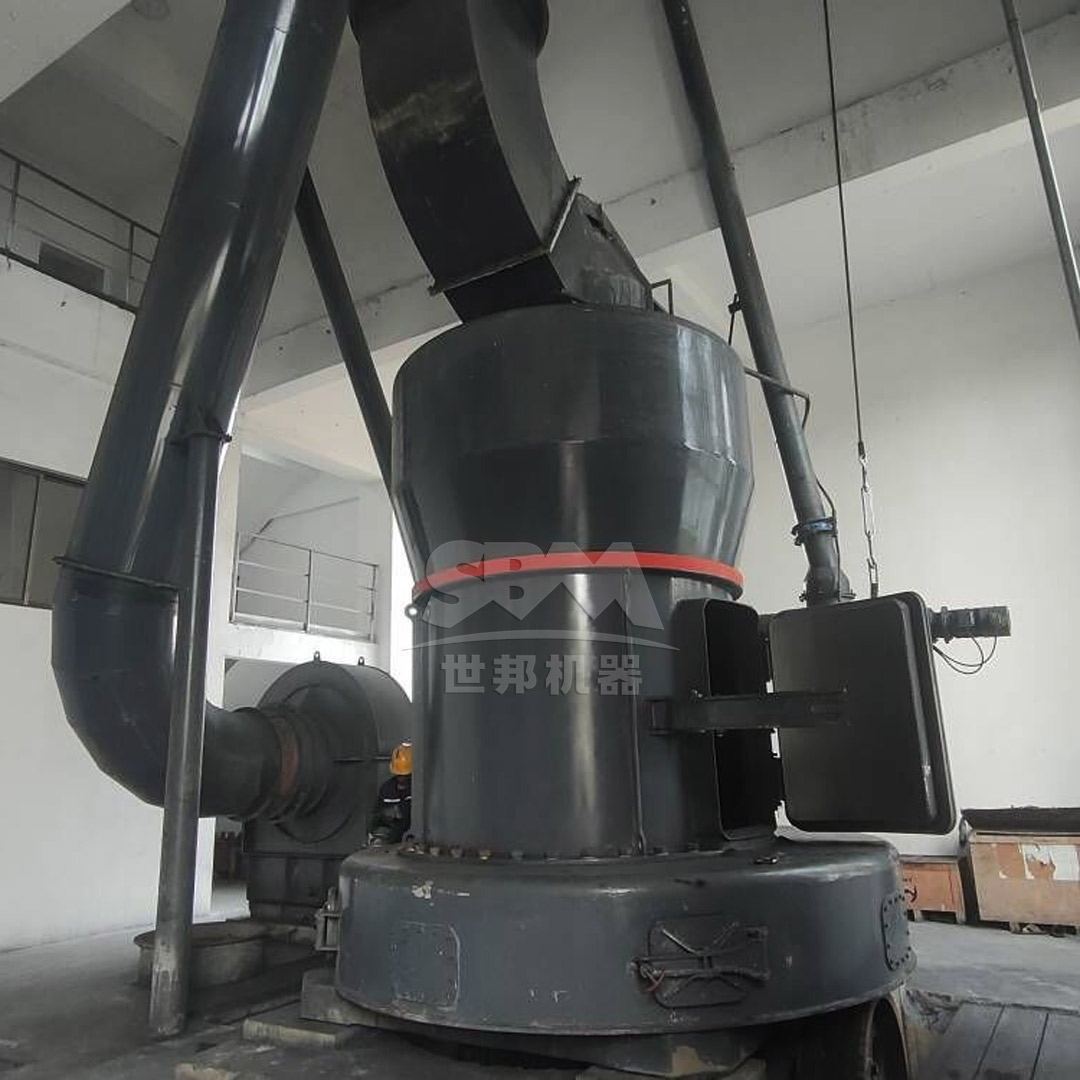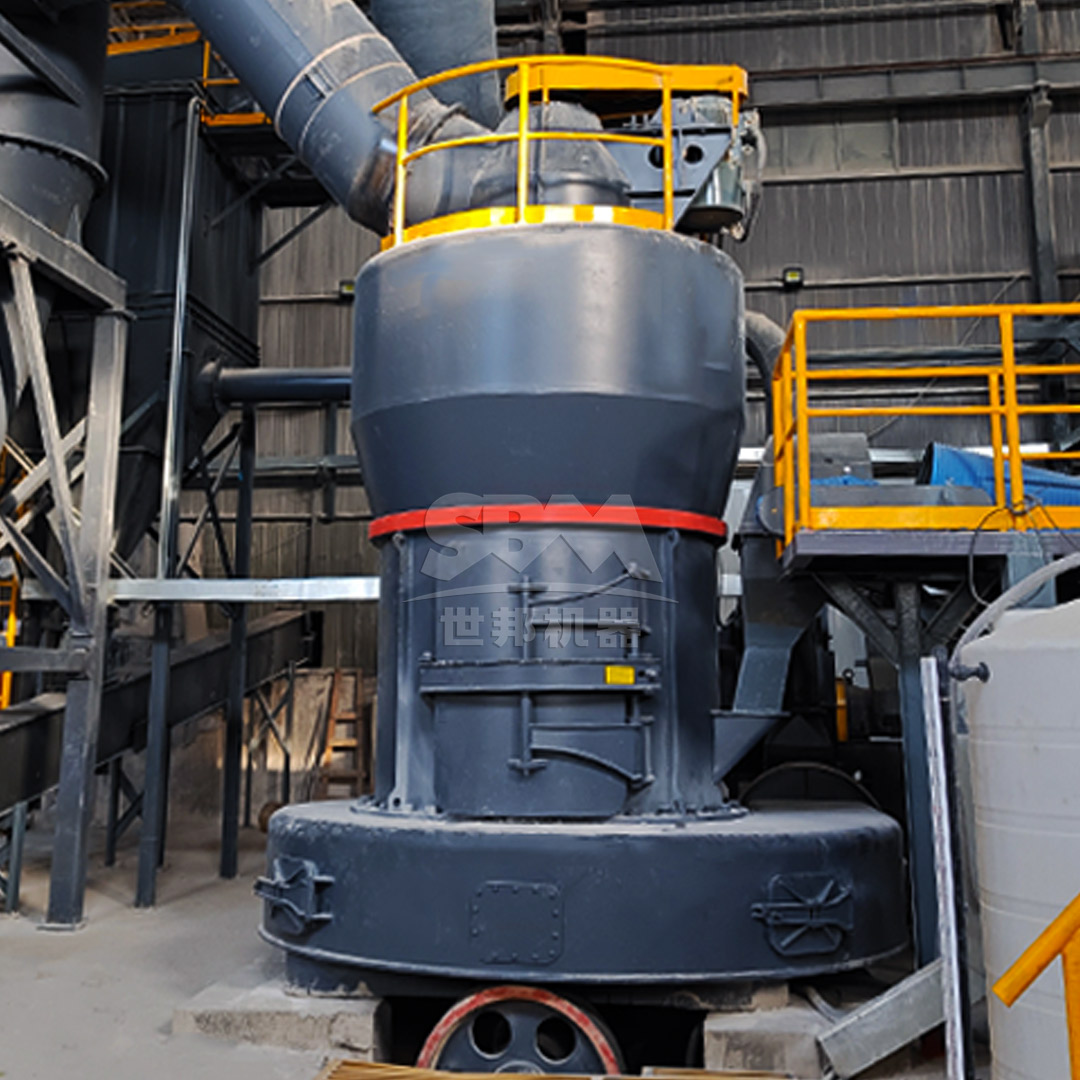The production of high-purity calcium carbonate from limestone represents one of the most important mineral processing applications across numerous industries. With applications spanning from pharmaceuticals and food additives to plastics, paints, and paper coating, the demand for precisely controlled calcium carbonate powder continues to grow. The key to successful production lies in selecting the appropriate grinding technology that can deliver the required particle size distribution while maintaining chemical purity and optimizing operational efficiency.
Limestone, primarily composed of calcium carbonate (CaCO3), undergoes a transformation from raw mineral to high-value powder through mechanical size reduction. The choice of grinding equipment significantly impacts the final product quality, production capacity, and operational costs. Roller mill technology has emerged as the preferred solution for high-purity calcium carbonate production due to its precision, efficiency, and ability to maintain product integrity throughout the grinding process.

The specifications for calcium carbonate powder vary significantly depending on the intended application. For instance, the paper industry typically requires fillers in the range of 2-20μm, while coatings may need ultrafine particles below 2μm. Pharmaceutical applications demand the highest purity levels with tightly controlled particle size distributions to ensure consistent performance in tablet formulations and other medicinal products.
Understanding these requirements is crucial for selecting the appropriate grinding technology. Roller mills offer the flexibility to produce calcium carbonate across this wide spectrum of fineness requirements, from coarse fillers to ultrafine specialty products. The ability to precisely control particle size distribution while minimizing contamination makes roller mills particularly suitable for high-purity applications.
Producing high-purity calcium carbonate requires careful attention to several factors beyond simple particle size reduction. Chemical purity must be maintained by minimizing contamination from grinding media and equipment wear. Iron contamination, in particular, can discolor the final product and limit its applications in premium markets. Additionally, moisture control, crystal structure preservation, and surface chemistry all play vital roles in determining the final product quality.
Modern roller mill designs address these concerns through specialized wear materials, efficient classification systems, and controlled grinding environments. The selection of appropriate liner materials, grinding elements, and separation technology ensures that the natural whiteness and chemical characteristics of the limestone are preserved throughout the process.
Roller mills operate on the principle of bed comminution, where material is ground between rotating grinding elements and a stationary grinding track. In the context of limestone processing, this method offers significant advantages over alternative technologies like ball mills or impact mills. The material is fed centrally onto the grinding table and transported outwardly by centrifugal force under the grinding rollers. The grinding force is generated hydraulically and transferred to the material bed via the rollers.
This grinding mechanism creates a highly efficient size reduction process with minimal energy consumption compared to alternative technologies. The confined grinding zone and controlled material flow prevent overgrinding and reduce the generation of excessive fines, resulting in a more desirable particle size distribution. Simultaneous drying can be achieved by introducing hot gases into the grinding chamber, making roller mills suitable for processing limestone with varying moisture content.
A modern limestone roller mill consists of several critical components that work in harmony to achieve optimal grinding performance:
Each component must be precisely engineered and maintained to ensure consistent production of high-purity calcium carbonate. The design of these components has evolved significantly over recent decades, with modern mills offering improved efficiency, reliability, and control compared to earlier generations.

For operations requiring the highest purity calcium carbonate with ultrafine particle sizes, we strongly recommend our SCM Ultrafine Mill series. This advanced grinding system represents the pinnacle of fine grinding technology, specifically engineered for materials like limestone where product quality is paramount.
The SCM Ultrafine Mill operates with a unique grinding principle that combines impact, attrition, and shearing forces to achieve exceptional fineness control. With an output range of 325-2500 mesh (D97≤5μm), this mill is perfectly suited for producing calcium carbonate for premium applications such as pharmaceuticals, high-end plastics, and specialty coatings. The vertical turbine classification system ensures precise particle size cuts with no coarse powder contamination, guaranteeing consistent product quality batch after batch.
| Model | Processing Capacity (ton/h) | Main Motor Power (kW) | Feed Size (mm) | Final Fineness (mesh) |
|---|---|---|---|---|
| SCM800 | 0.5-4.5 | 75 | 0-20 | 325-2500 |
| SCM900 | 0.8-6.5 | 90 | 0-20 | 325-2500 |
| SCM1000 | 1.0-8.5 | 132 | 0-20 | 325-2500 |
| SCM1250 | 2.5-14 | 185 | 0-20 | 325-2500 |
| SCM1680 | 5.0-25 | 315 | 0-20 | 325-2500 |
Beyond its impressive technical specifications, the SCM Ultrafine Mill offers substantial operational advantages. Its energy efficiency—consuming 30% less power than conventional jet mills while delivering twice the capacity—translates to significantly lower production costs. The specially designed grinding rollers and rings, manufactured from wear-resistant materials, provide extended service life and prevent metallic contamination of the calcium carbonate product. Furthermore, the integrated pulse dust collection system exceeds international environmental standards while maintaining the purity of the collected powder.
For operations requiring high-volume production of calcium carbonate across a broad fineness range, our MTW Series Trapezium Mill offers an optimal balance of performance, efficiency, and reliability. This robust grinding system handles feed sizes up to 50mm and produces powder ranging from 30-325 mesh, making it suitable for a wide spectrum of industrial applications.
The MTW Series incorporates several innovative features that enhance its suitability for limestone grinding. The curved air channel design minimizes resistance and improves material conveying efficiency, while the bevel gear integral transmission achieves an impressive 98% transmission efficiency. These design elements contribute to lower energy consumption and reduced operating costs compared to conventional grinding systems.
| Model | Processing Capacity (ton/h) | Main Motor Power (kW) | Feed Size (mm) | Final Fineness (mesh) |
|---|---|---|---|---|
| MTW110 | 3-9 | 55 | <30 | 10-325 |
| MTW138Z | 6-17 | 90 | <35 | 10-325 |
| MTW175G | 9.5-25 | 160 | <40 | 10-325 |
| MTW215G | 15-45 | 280 | <50 | 10-325 |
The wear-resistant design elements of the MTW Series significantly reduce maintenance requirements and associated downtime. The combined shovel blade design lowers replacement costs, while the specially formulated wear-resistant materials in critical components extend service intervals. These features, combined with the mill’s high throughput capacity, make it an excellent choice for large-scale calcium carbonate production facilities where operational continuity and cost efficiency are priorities.
The quality of the final calcium carbonate product begins with proper feed preparation. Limestone should be carefully crushed to the appropriate feed size for the selected roller mill, typically below 20mm for ultrafine mills and up to 50mm for larger trapezium mills. Proper pre-crushing not only optimizes grinding efficiency but also helps remove potential contaminants that might be present in larger rock fragments.
Moisture control represents another critical aspect of feed preparation. While roller mills can handle materials with moderate moisture content through integrated drying systems, excessive moisture can negatively impact grinding efficiency and product quality. For high-purity applications, pre-drying the limestone to below 1% moisture content often yields superior results, particularly when producing ultrafine powders where agglomeration becomes a concern.
Achieving the optimal balance between production rate, energy consumption, and product quality requires careful adjustment of several grinding parameters. The grinding pressure, classifier speed, feed rate, and gas flow (for mills with drying capability) must be harmonized to match the specific characteristics of the limestone feed and the requirements of the final product.
Modern roller mills equipped with advanced control systems allow for precise adjustment and stabilization of these parameters. Implementing automated control strategies based on real-time monitoring of power consumption, pressure differentials, and product fineness can significantly improve operational consistency and reduce the need for manual intervention. For calcium carbonate production, maintaining stable grinding conditions is particularly important for ensuring consistent brightness and chemical properties in the final product.

The collection and handling of the ground calcium carbonate present additional opportunities for optimizing product quality. Efficient separation of the fine powder from the transport air stream requires properly designed and maintained collection systems. Baghouse filters with appropriate filter media selection ensure high collection efficiency while preventing product degradation.
For ultrafine calcium carbonate products, special attention must be paid to preventing re-agglomeration during collection and subsequent handling. Temperature control, humidity management, and appropriate surface treatment (if applicable) all contribute to maintaining the desired powder properties. Implementing mass flow design principles in storage and transfer equipment minimizes compaction and ensures consistent product flow throughout the packaging and shipping processes.
Maintaining consistent product quality requires rigorous monitoring of several key parameters throughout the production process. Particle size distribution represents the most fundamental quality characteristic, typically measured using laser diffraction techniques for comprehensive analysis. The D50, D97, and top-size measurements provide critical information about the grinding performance and classification efficiency.
Beyond particle size, chemical purity must be verified through regular testing for impurities such as silica, iron, aluminum, and magnesium. Brightness and yellowness index measurements are essential for applications where visual appearance matters, such as in plastics and paper. For specialized applications, additional tests might include specific surface area (BET), oil absorption, and particle morphology analysis using SEM imaging.
Implementing statistical process control (SPC) methodologies enables proactive quality management and early detection of process deviations. By establishing control limits for critical parameters and tracking performance over time, operators can identify trends and implement corrective actions before product quality is compromised. Modern roller mills with integrated control systems facilitate SPC implementation through comprehensive data logging and reporting capabilities.
Regular calibration of monitoring equipment and participation in inter-laboratory comparison programs ensure the accuracy and reliability of quality control data. For operations supplying calcium carbonate to regulated industries such as pharmaceuticals or food, adherence to Good Manufacturing Practice (GMP) guidelines becomes essential, requiring documented procedures, validated methods, and comprehensive change control protocols.
When evaluating roller mill technology for calcium carbonate production, considering the total cost of ownership provides a more accurate assessment than focusing solely on initial equipment costs. Energy consumption typically represents the largest operational expense, making the superior efficiency of modern roller mills a significant economic advantage. Our SCM Ultrafine Mill, for example, reduces energy consumption by 30% compared to conventional jet mills while delivering double the capacity.
Maintenance costs constitute another major component of the total ownership cost. The durable design of our recommended mills, featuring special material grinding rollers and rings with extended service life, significantly reduces replacement part requirements and associated downtime. The intelligent maintenance features, including wear monitoring and predictive maintenance capabilities, further contribute to minimizing unplanned shutdowns and maximizing equipment availability.
The ability to quickly adjust product specifications to meet changing market demands represents a significant economic advantage. Roller mills offer exceptional flexibility in terms of product fineness, with quick adjustment capabilities through classifier speed changes. This responsiveness enables producers to serve multiple market segments with the same equipment, maximizing asset utilization and improving return on investment.
For calcium carbonate producers operating in competitive markets, the capability to consistently deliver high-purity products with tightly controlled specifications creates opportunities for premium positioning and improved profit margins. The product quality achievable with advanced roller mill technology often justifies investment in this equipment through enhanced market access and customer satisfaction.
The production of high-purity calcium carbonate from limestone has evolved significantly with advancements in roller mill technology. Modern grinding systems offer unprecedented control over particle size distribution, chemical purity, and operational efficiency. The selection of appropriate equipment, such as our recommended SCM Ultrafine Mill for premium applications or MTW Series Trapezium Mill for high-volume production, provides a solid foundation for successful calcium carbonate manufacturing.
Beyond equipment selection, attention to process optimization, quality control, and economic factors ensures long-term competitiveness in this demanding market. As customer requirements continue to evolve toward finer particle sizes, tighter specifications, and enhanced sustainability, roller mill technology remains at the forefront of meeting these challenges while maintaining economic viability. Through strategic implementation of advanced grinding solutions and continuous process improvement, producers can successfully navigate the complexities of high-purity calcium carbonate production and capitalize on the growing opportunities in this dynamic market.